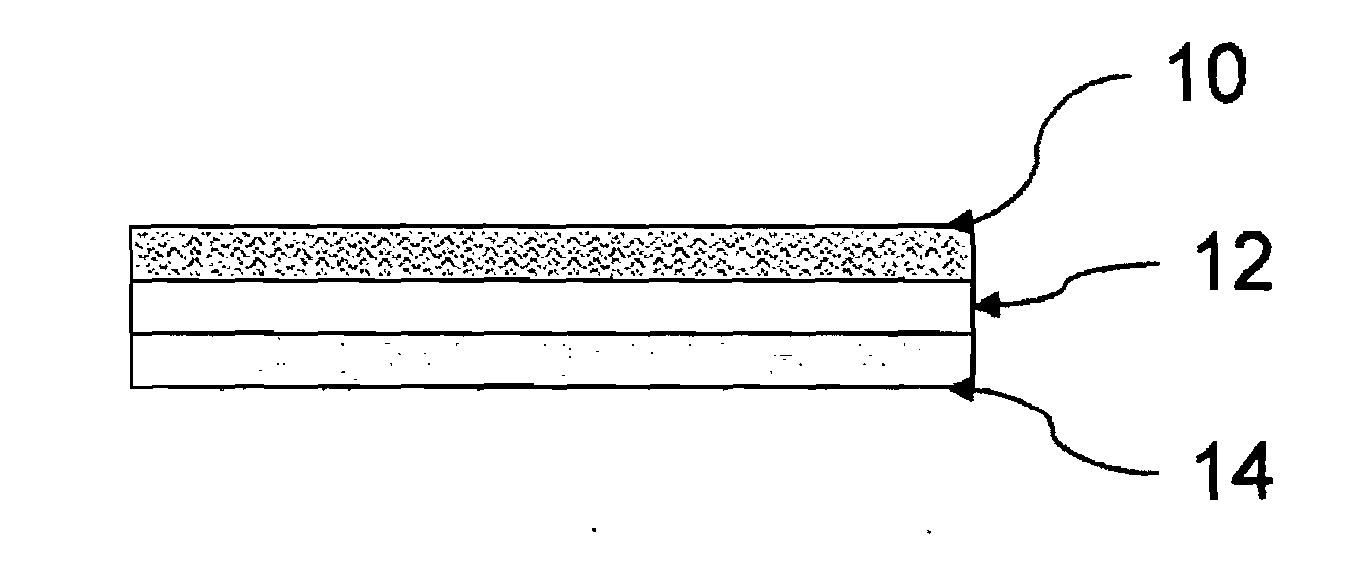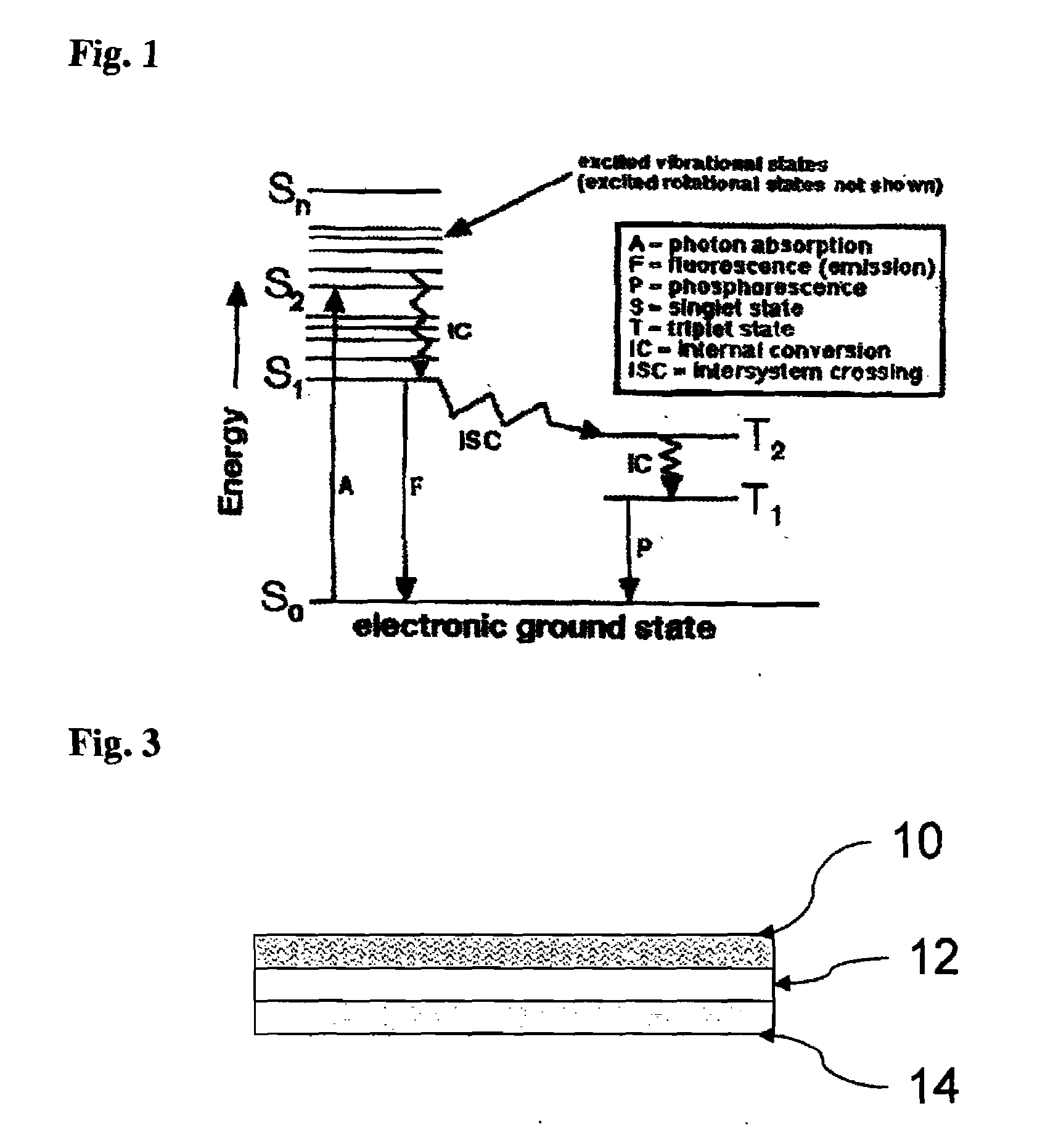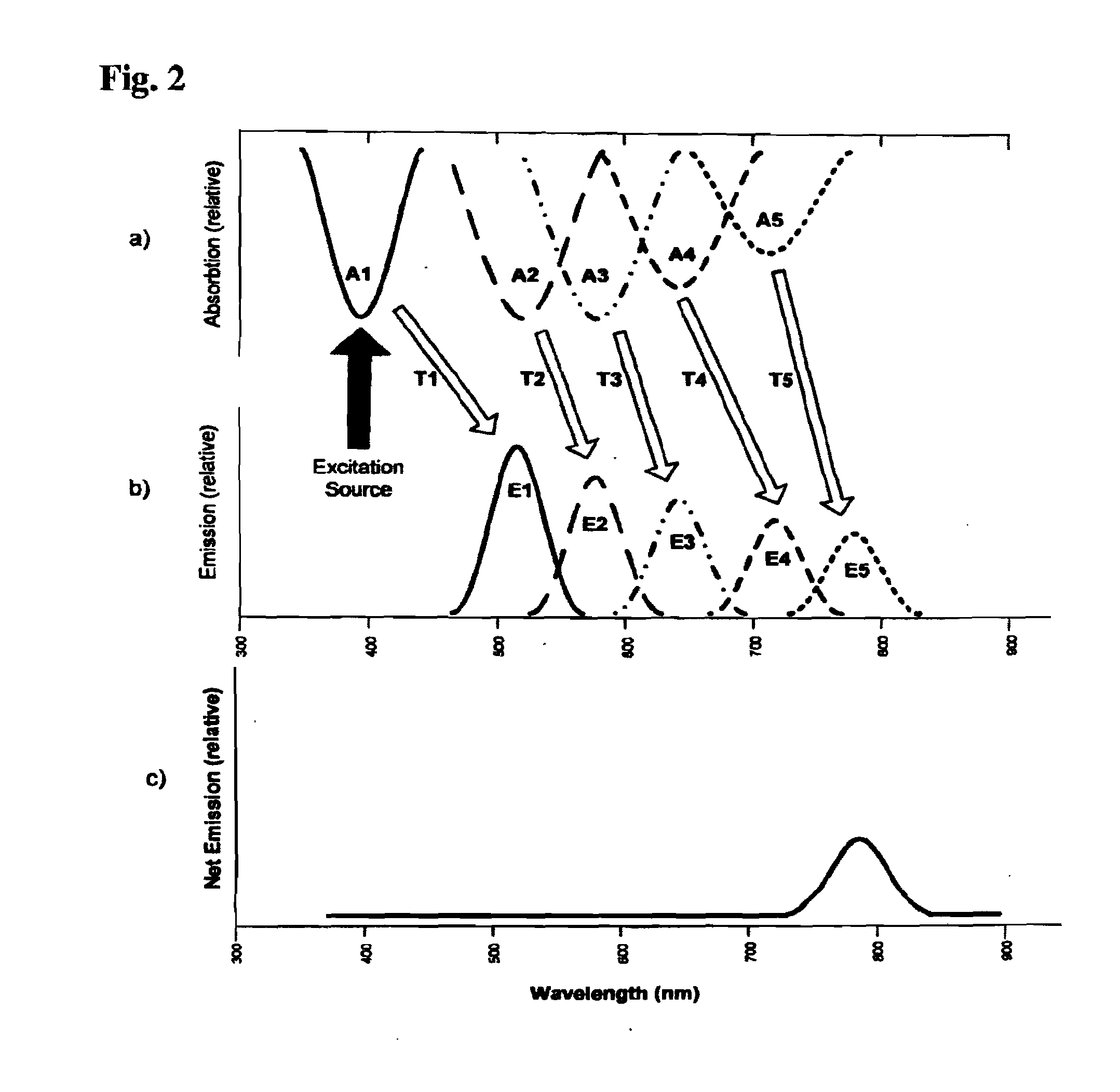Photoluminescent Compositions, Methods of Manufacture and Novel Uses
a technology of compositions and fluorescent materials, applied in the field of photoluminescent compositions, can solve the problems of limited use of fluorescent materials, observable tail emissions, and consequently no utility for clandestine markings, and achieve the effect of high intensity and high persisten
- Summary
- Abstract
- Description
- Claims
- Application Information
AI Technical Summary
Benefits of technology
Problems solved by technology
Method used
Image
Examples
example 1
Single Layer Embodiment
[0113]Into 54.47 g of ethylene glycol monobutyl ether was admixed 20.359 of NeoCryl® B-818 (an acrylic resin from DSM NeoResins®) To the admix was added 1.80 g of DisperBYK® 180 (from BYK-Chemie), 0.88 g of TEGO® Wet 270 and 0.57 g of TEGO® Airex 900 (both from Degussa GmbH) with stirring. Then 0.10 g of rhodamine 19P, 0.10 g of dichlorofluorescein, 0.10 g of Nile Blue, 0.10 g of Nile Red, 0.05 g of sulfarhodamine B, 0.01 g of rhodamine 800 and 0.01 g of 3,3′-diethyloxatricarbocyanine iodide were added and mixed. until dissolved. 20.35 g of H-13, green phosphor (from Capricorn Specialty Chemicals) was then added. 1.11 g of BYK® 410 was then added The photoluminescent composition thus prepared was coated onto a 3″×8″ swatch of white Mylar® film using a wire draw down bar, and dried at 50° C. (<5% solvent) for 12 hours to a dried thickness of 10 mils. The coated Mylar® swatch was placed in a RPS 900 emission spectrometer. An emission signature of 720 nm was meas...
example 2
Two Layer Embodiment
[0114]First Layer Composition
[0115]Into 17.80 g ethylene glycol monomethyl ether, 13.35 g butyl acetate, 8.90 g ethylene glycol monobutyl ether and 4.45 g ethyl alcohol was admixed 37.92 g of NeoCryl® B-818 (an acrylic resin from DSM NeoResins®). To the admix was added 0.28 g of Tinuvin® 405 (from Ciba Specialty Chemicals), 2.46 g of DisperBYK® 180 (from BYK-Chemie), 1.19 g of TEGOO Wet 270 and 0.78 g of TEGOO Airex 900 (both from Degussa GmbH). Then 0.06 g of rhodamine 19P, 0.03 g of Nile Blue, 0.06 g of Nile Red, 0.06 g of dichlorofluorescein, 0.03 g sulfarhodamine B, 0.01 g of rhodamine 800 and 0.01 g of 3,3′diethyloxatricarbocyanine iodide were added and mixed until dissolved. 11.1 g of H-13, green phosphor (from Capricorn Specialty Chemicals) and 1.51 g of BYK 410 (from BYKChemie) were then added.
[0116]Second Layer Composition
[0117]Into 61.99 g of ethylene glycol monobutyl ether was admixed 34.44 g of NeoCryl® B-818 (an acrylic resin from DSM NeoResins(&). T...
example 3
[0121]The method described in example 1 was repeated using a polystyrene placard in place of the Mylar® and with the alphanumeric “Danger!!!” written thereon. The placard was placed outside, affixed to a tree at approximately noon. Under nighttime conditions the placard could not be seen. When observed through a pair of night vision, IR sensitive goggles the alphanumeric was prominently displayed and the alphanumeric could be noted.
[0122]In short, it has been found that photoluminescent compositions and products as disclosed herein permit detection and identification of objects when these materials are associated with or applied to the objects. The compositions and products may include photoluminescent phosphorescent materials, photoluminescent fluorescent materials and combinations thereof. A key advantage of the use of the photoluminescent phosphorescent materials is that they can be activated or excited without requiring specialized sources. That is, for example, the materials ca...
PUM
| Property | Measurement | Unit |
|---|---|---|
| time | aaaaa | aaaaa |
| time | aaaaa | aaaaa |
| thickness | aaaaa | aaaaa |
Abstract
Description
Claims
Application Information
 Login to View More
Login to View More - R&D
- Intellectual Property
- Life Sciences
- Materials
- Tech Scout
- Unparalleled Data Quality
- Higher Quality Content
- 60% Fewer Hallucinations
Browse by: Latest US Patents, China's latest patents, Technical Efficacy Thesaurus, Application Domain, Technology Topic, Popular Technical Reports.
© 2025 PatSnap. All rights reserved.Legal|Privacy policy|Modern Slavery Act Transparency Statement|Sitemap|About US| Contact US: help@patsnap.com



